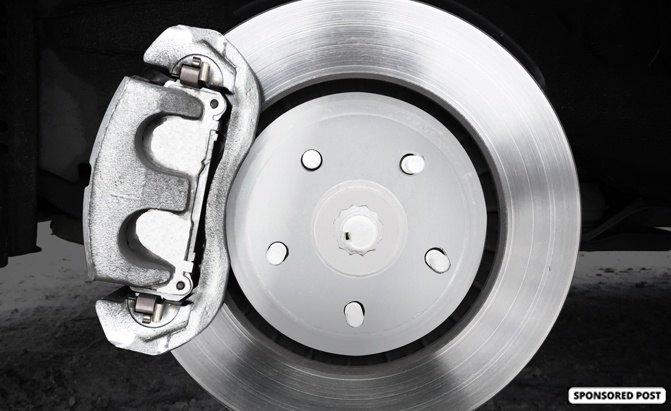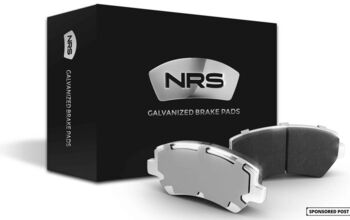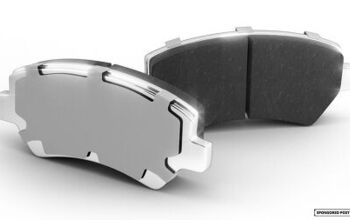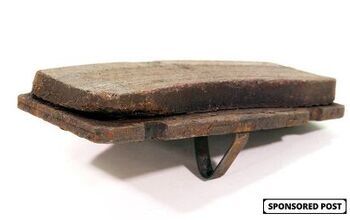Brake Replacement: Here's How To Change Your Brake Pads
Your brakes are one of the most important safety features on your car. That’s why keeping them in top shape — and regular brake replacement — is so important.
Brakes, just like tires, naturally wear down over time though. General use is the main culprit, but cars in more varied weather locations can see quicker wear. Snow and salt are natural enemies of the metals found in your car, truck or crossover.
Luckily, brake pads are generally a pretty straightforward swap come time for replacement. Lots of people take their cars into a shop for the work, but with a little bit of research and the right tools, you can do it yourself in little time.
Related: How Long Do Brake Pads Last?
With the help of the experts at NRS Brakes, we’ve come up with a guide for how to change your own brake pads—plus signs to know when it’s time for new brake pads, whether you’re planning to change them yourself or not.
Tools You’ll Need
While most vehicle braking systems are similar to one another, each has its own quirks. You’ll want to check your car’s service manual before starting for the specifics, or an online owner’s forum. These should provide you with a list of all the specific wrenches, ratchets and sockets you’ll need. It’s possible to do it all with hand tools, but an impact wrench will make the whole process easier.
Here’s a general checklist of what you’ll want to have handy before replacing your brake pads:
- A strong jack to lift your vehicle, plus jack stands
- Wheel chocks, bricks, or similar items, to block the wheels and stop the car from moving
- A C-clamp
- Wire brush
- A good set of work gloves and a few rags
- Don’t forget the WD-40!
Brake Replacement: Step-By-Step
Now that you’ve got the necessary tools, let’s walk you through the brake replacement process:
With your car raised and the necessary wheels off, the first thing to do is remove the caliper, the part that clamps down on the brake pad material. The caliper should have a few bolts on the inside edge: loosen them and it should slide off the brake assembly. Once it’s off, hang the caliper somewhere in the wheel well, preferably with a piece of wire. It’s connected to the brake line, and we don’t want to put any strain on that.
With the caliper off, you should be able to remove the existing pads easily. Slide them out, but don’t get rid of them yet. Apply a bit of grease to the caliper slide pins while it’s hanging, but make sure to remove any excess from both the pins and your gloves before moving onto the next step.
Next you’ll want to turn your attention back to the caliper assembly. Using the C-clamp and an old brake pad, compress the piston back into the caliper. This will make it easier to clear the new brake pads, especially if there’s a slight change in size. Use the old brake pad between the caliper and clamp to protect the piston surface.
Note: Some caliper pistons may require special tools. Always consult your car’s owner manual.
Now it’s time to put the new pads in place. On the inside pad, dab a little bit of grease on the backside before installing. This side contacts the piston, and the grease should minimize squealing. Now put the outside pad in place. Next, get your caliper off its hanger and slide it over the whole assembly. Tighten the pins first by hand, then with a torque wrench to the proper manufacturer spec.
With everything back together, including the wheels, start the car and pump the brake pedal a few times to rebuild pressure. Don’t drive the car until the feel and pressure have both returned.
Keep in mind that every replacement part probably has its own break-in procedure. Refer to the instructions that came with the parts to know for sure.
How To Know It’s Time For New Brake Pads
There are a few telltale signs that your pads might need replacing. Here are three key factors you’ll be looking for to determine whether you’ll need a brake replacement:
- Noise
- Thickness
- Delamination
If you regularly hear a screeching or squealing noise every time you apply the brakes, it could be time to replace those brake pads. (Note that rainy or otherwise damp conditions can also make your brakes vocal; if the noise goes away after a few stops, it was likely just weather-related, and not a sign of needed brake replacement.)
Another good way to know if your brake pads need to be replaced is to look at them. Peek through your car’s spokes and look for the pad, up against the brake rotor. If any pad is less than a quarter-inch thick, you should consider getting them replaced, or at least have a brake specialist inspect them.
Related: How to Check Brake Pads
If parts of the friction pad have crumbled off you should also consider new brake pads as soon as possible. When this happens—a process called rust-jacking or delamination—it can lead to a dangerous domino effect, where excessive heat transfer can essentially make your brake system nonfunctional. Premium brake pads, like the Galvanized Brake Pads from NRS Brakes, use a special approach to avoid this from ever happening.
Why Galvanized Brake Pads
Galvanization is the key to longer brake pad life, and more even wear. Instead of using a painted metal backing plate, galvanized brake pads from NRS Brakes have steel that is fully treated to a rust-resistant zinc coating. This prevents corrosion, ensuring that the brake pad’s life is based on the amount of friction material, not on the rest of it failing before the pad’s worn out.
NRS Brakes also don’t use adhesives to bind the friction material to the backing plate. Instead, the company’s patented SHARK-Metal Technology uses dozens of tiny metallic grooves to mechanically bind the friction material and backing plate together, locking it in place and eliminating the leading causes of premature brake system wear: corrosion and brake pad material separation.
Related: What is the Best Brake Pad Material?
Not only does galvanization increase brake pad life, it also decreases brake noise and can shorten braking distances.
There you have it. Changing your brake pads is a fairly straightforward bit of maintenance. It’s not just a matter of safety, it’s also a chance to learn more about your car.
For more on NRS Brakes and its galvanized brake pads, click here.
More by AutoGuide.com Staff

































Comments
Join the conversation